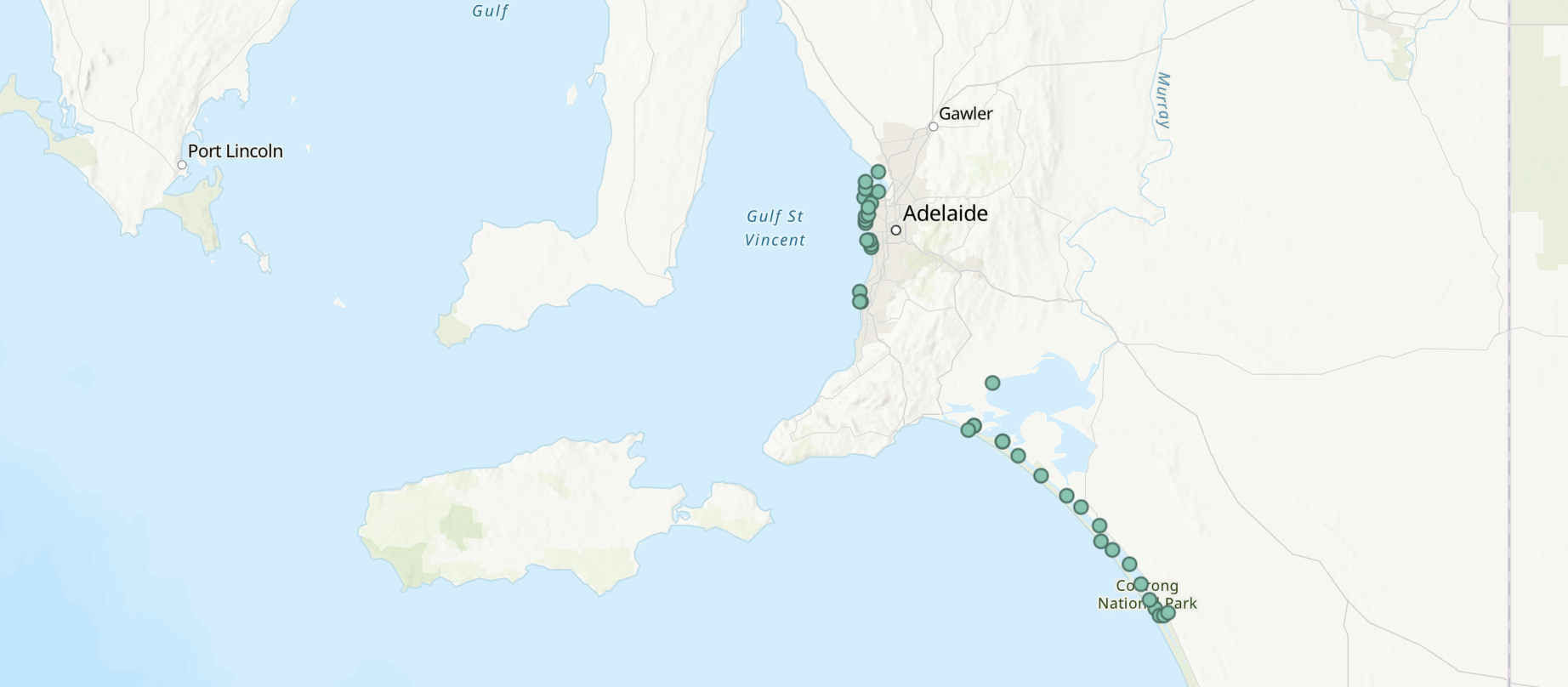Extent of SA algal bloom spread revealed
The harmful algal bloom causing widespread fish deaths along South Australia’s coastline has been detected at 12 metropolitan locations, new testing reveals.

Testing undertaken earlier this week has confirmed elevated levels of the harmful algal bloom (HAB) of the Karenia species at Dock One in the Port River and at the West Lakes inlet.
Varying levels of the HAB have also been detected at St Kilda Boat Ramp, Grange Jetty, North Haven Boat Ramp, SARDI Caisson Intake off West Beach, West Beach Boat Ramp, O’Sullivan Beach Boat Ramp, Onkaparinga Rowing Club, King St Bridge in the Patawalonga River, West Lakes Lochside Footbridge and West Lakes Exit near Bower Road.
The state government’s new HAB water sampling dashboard also shows the HAB was detected all along the Coorong, off the coast of Milang and near Torrens Island.

Weekly water samples are being taken at 18 metropolitan sites, the state government’s Department for Environment and Water said.
“It is part of a coordinated effort by multiple agencies to share information about the algal bloom, and support affected industries and communities,” DEW said.
The HAB has caused mass marine deaths off the coast of South Australia, leading to metropolitan beaches being littered with dead fish and other marine species, while underwater coral and plant life has been impacted too.
You might like
A dolphin carcass was collected from Seacliff Beach yesterday, the government said.
But Department of Primary Industries and Regions chief executive Professor Medhi Doroudi said it was still his advice that the HAB shouldn’t be affecting marine mammals in the same way it has affected fish.
“When the algae bloom happens, it takes a significant amount of oxygen out of the water,” he said.
“When aquatics are relying on a gill system, that lack of oxygen is going to kill them in a matter of seconds or minutes.
“Mammals like dolphins have systems like animals and humans. To be sure, we have taken this dolphin to the lab and we are doing an autopsy on it to find out more.”
DEW said the bloom “occurs naturally and no human intervention can be made to dilute or dissipate it”.
Three contributing factors have been put forward by DEW as to the cause of the bloom: an “unprecedented” marine heatwave in September 2024, the 2022-23 River Murray flood washing extra nutrients into the sea or an unprecedented cold-water upwelling in summer 2023-24 that has brought nutrient-rich water to the surface.
| Sponsored |
Stay informed, daily
SA senator Sarah Hanson-Young said the algal bloom was a national disaster requiring a national response. She called on Prime Minister Anthony Albanese “to come to Adelaide to stand on the beaches with me and to take some action”.
Opposition leader Vincent Tarzia today reiterated calls for a Royal Commission into the disaster.
“We’ve been watching dead fish wash up on our coastlines for months, and local businesses being affected in peak tourism seasons, yet we’ve had nothing but confusion and excuses, from both State and Federal Governments who appear to be hand balling the this environmental crisis between each other,” he said.
“It needs to be a priority for the Government and clearly hasn’t been for the past few months. The Opposition is calling for a Royal Commission because this situation needs to be properly investigated, prioritised, and addressed with the urgency it deserves.”
The state government on Tuesday said it was working with the federal government on ways to tackle the crisis. It also established on Tuesday a reference group to help industries and stakeholders respond to, and recover from, the algal bloom.
Earlier this month, the government announced it would waive licence fees for fishers affected by the HAB.
DEW said its fisheries patrol vessel conducted an initial investigation into the Gulf St Vincent to conduct underwater observations and water sampling to understand the HAB’s effect on the ecosystem.
Doroudi said his department was in discussions with the Commonwealth Government to expand its integrated marine observing system to cover more estuary and coastal areas of the state.
“We have been talking to the National Emergency Management Authority to see what level of support we can get from them under the natural disaster funds,” Doroudi said.
SA Health advice is to avoid foamy or colourful water, he said.
DEW will continue monitoring the bloom, he added.
“I was hopeful with the change of weather, with the cooler temperature and some rain this is going to go away,” he said.
“We need to keep monitoring. It may go away very soon, and it may be there for months to come. We just need to keep monitoring and making our way through it.”









